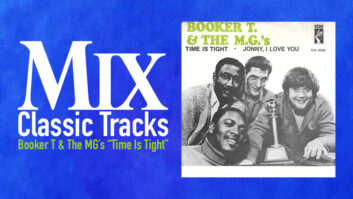
If we look at the development of electronics, we see tremendous improvements over time. This progress is largely due to the miniaturization of components, new process efficiencies, the lowering cost of integrated circuits and an overall increase in their capacity. These improvements not only apply to processors (an observation known as Moore’s law), they also apply to other solutions—for example, the lowering cost of converting between analog and digital signals.
If we look at the size and weight of power amplifiers, we see a similar phenomenon. Over the past 40 years, we have seen the density roughly double if we consider items such as channel count and total program power. Indeed, every six years, we have seen the physical size of amplifiers become twice as small or achieve twice the capacity for a given size every six years. Some of this is the result of new materials and components arriving on the market, some is from clever product design, and some is from the increased knowledge of real-life requirements for a given application.
When it becomes time to invest in the development of a new product family, such as our new T Series amplifiers, these developments need to be taken into consideration—particularly if a new product family is to remain competitive ten years or more after its launch.
Powersoft has had good success establishing itself as a leading supplier of very reliable, very efficient, lightweight amplifiers for demanding high-end applications in live sound. The headroom in the amplifiers guarantees pristine sound and dependable performance from the loudspeakers.
The most competitive, best-in-class products for large, high-performance systems are able to integrate advanced loudspeaker processing and can accommodate features like audio networking and loudspeaker monitoring. This turns what some might still want to refer to as a power amplifier into a loudspeaker processor that integrates a power amplifier: the networking capabilities make it scalable, and if it’s done well, it can become a distributed loudspeaker management system.
When our development team was faced with the challenge of creating the next generation of a cost-effective amplifier for smaller systems on a tighter budget, we had some tough choices to make. In order to reach a larger user group, we had to make it simple to operate, resulting in a guaranteed behavior, but we didn’t want to remove the ability to control advanced processing or audio networking—two things we feel will become industry standards in the years to come.
The front panel is super easy to use. We spent a lot of time on the user interface here because we wanted it to be fast to operate and intuitive. To reduce the risk of errors and to help guide the user, we went with dedicated buttons for navigating, as well as enabling value editing. The menu system is shallow and based on just 10 main pages, while the navigation buttons scroll between each of these. The buttons around the display change functionality depending on the page.
Another product feature is the extensive preset library and the powerful processing power; FIR filters allow preset designers to give the loudspeakers optimal transient responses, and cables can be compensated for, ensuring optimal performance at low frequencies.
Audio transmission over the network has become very common for large events, but until now it has not been widely available on more cost-efficient products. Configuring network equipment can be a challenge. For users who want to explore this, the Powersoft T Series makes it possible without any configuration on the network side; all that’s required is connecting all the amplifier in a daisy chain, with the sound source at one end and the PC for control at the other end. We hope customers take advantage of this valuable feature.
To help our new users learn new skills (and help existing ones deploy their existing skills into smaller systems), the T Series includes full integration with Armonía+, our system control software. It facilitates tuning the system via overlapping groups with raised cosine filters, or by ear using an integration of Smaart. Many parameters that require settings per channel or per amplifier on other platforms can be performed directly on arrays or other selected groups of speakers in the software. Using Armonía+, it’s also possible to troubleshoot a system and to look at the impedance of the connected loudspeaker(s) on each channel.
Most live sound amplifier product families will feature lower voltages for smaller, lower-cost models. In smaller systems, however, it is quite common to have a single 8 ohm loudspeaker per channel. This presented an opportunity for our development team: why not make a very homogenous amplifier range in which all models could deliver the same high output voltage so that smaller models could also play “full SPL” on 8 ohm speakers? This would allow for power sharing between channels and make the smaller models more affordable by saving in the power supply and output current capacity, while providing a solid feature set for the entire product family. The larger models would only be needed if all channels required full power, or if more loudspeakers needed to be used in parallel. The example presented in the sidebar shows how a small amplifier can outperform amplifiers that are twice the size and match models three times their size. For a user who sees these benefits, it becomes possible to compare T with other products and get the benefit of a product with a richer feature set for the same money instead.
Klas Dalbjörn is product manager at Powersoft.
Powersoft • www.powersoft-audio.com
SIDEBAR: Power Sharing Explained
Many loudspeaker systems are bi-amped, using an 8 ohm LF that is rated at 600 W AES—requiring an amplifier rated for 1200 W BURST for full SPL. The second channel will often be an 8 or 16 ohm HF rated at 150 W AES and requiring an amplifier rated for 300 W BURST. If you wanted to drive two of these systems in the past, you would have had to look for an amplifier that wasn’t designed for power sharing and typically was designed to deliver twice the power in 4 ohm. As such, you would normally have bought an amplifier capable of 4 x 2400 W BURST model (around 10 kW in total).
With the high voltage and power sharing of a Powersoft T Series, it is enough to buy a model with a max power capacity less than one-third of that. The T 304 can drive 4 x 750 W, but it can also give the above speaker all the power it needs: 1200+300+1200+300 = 3,000 W.







